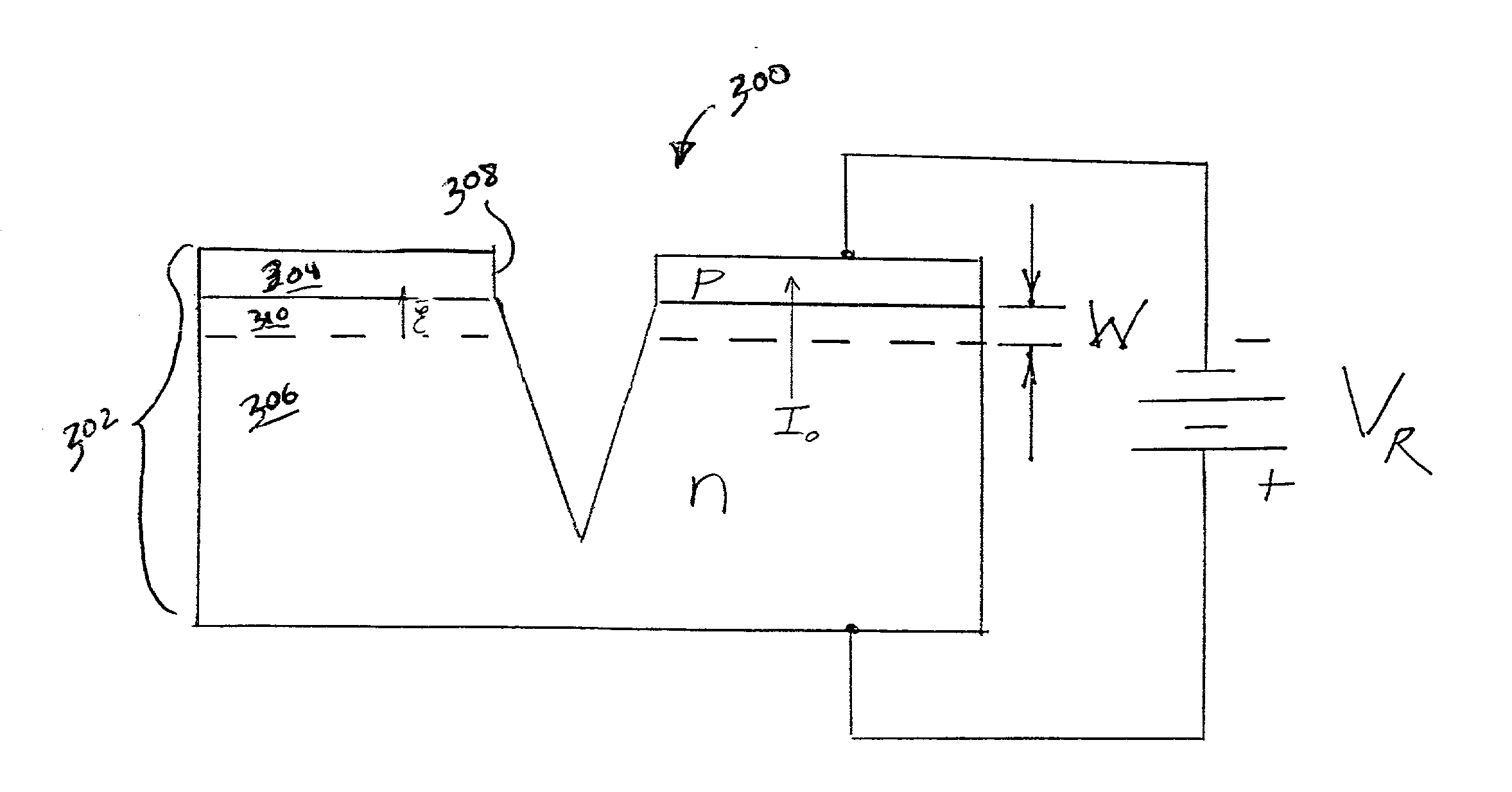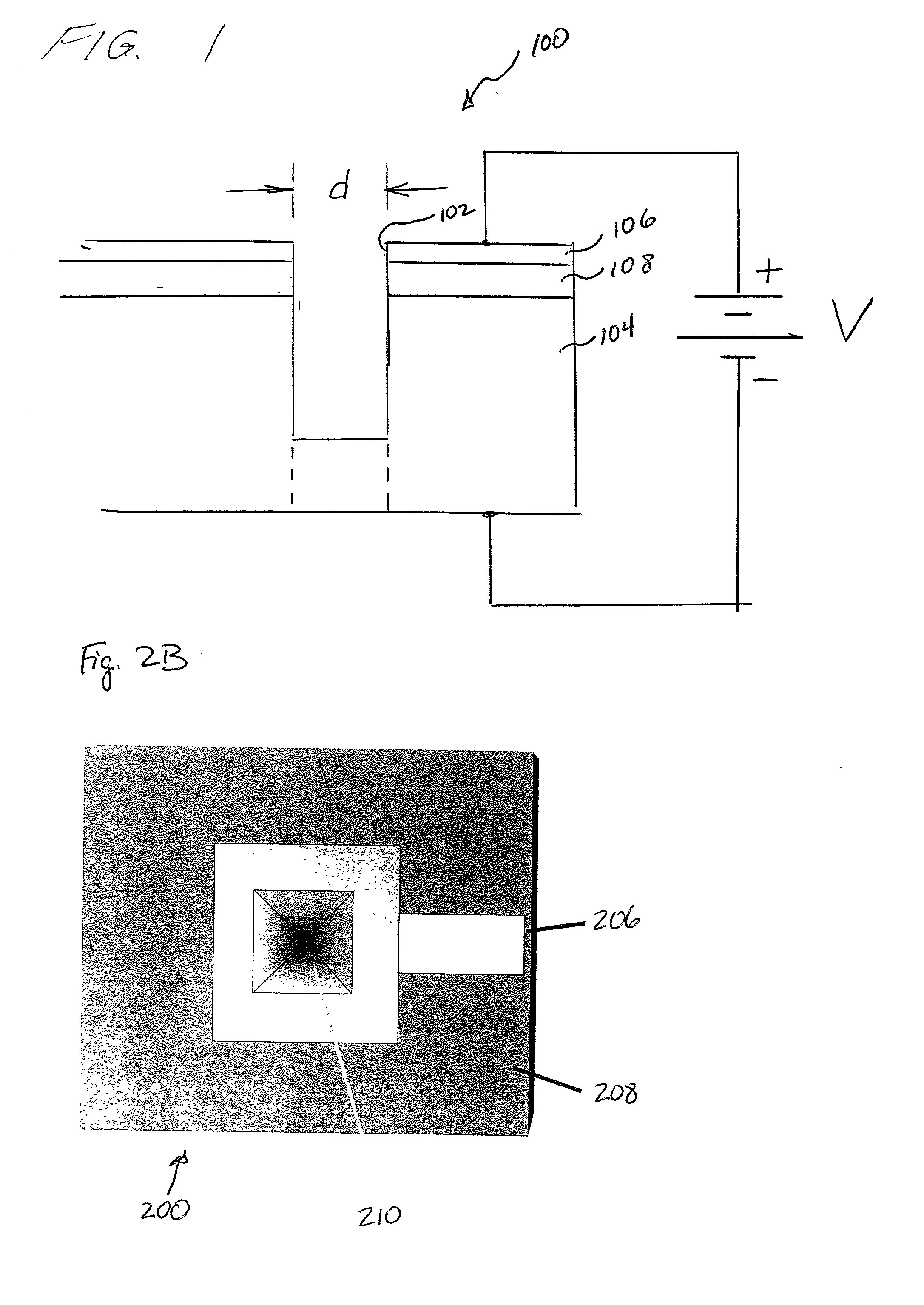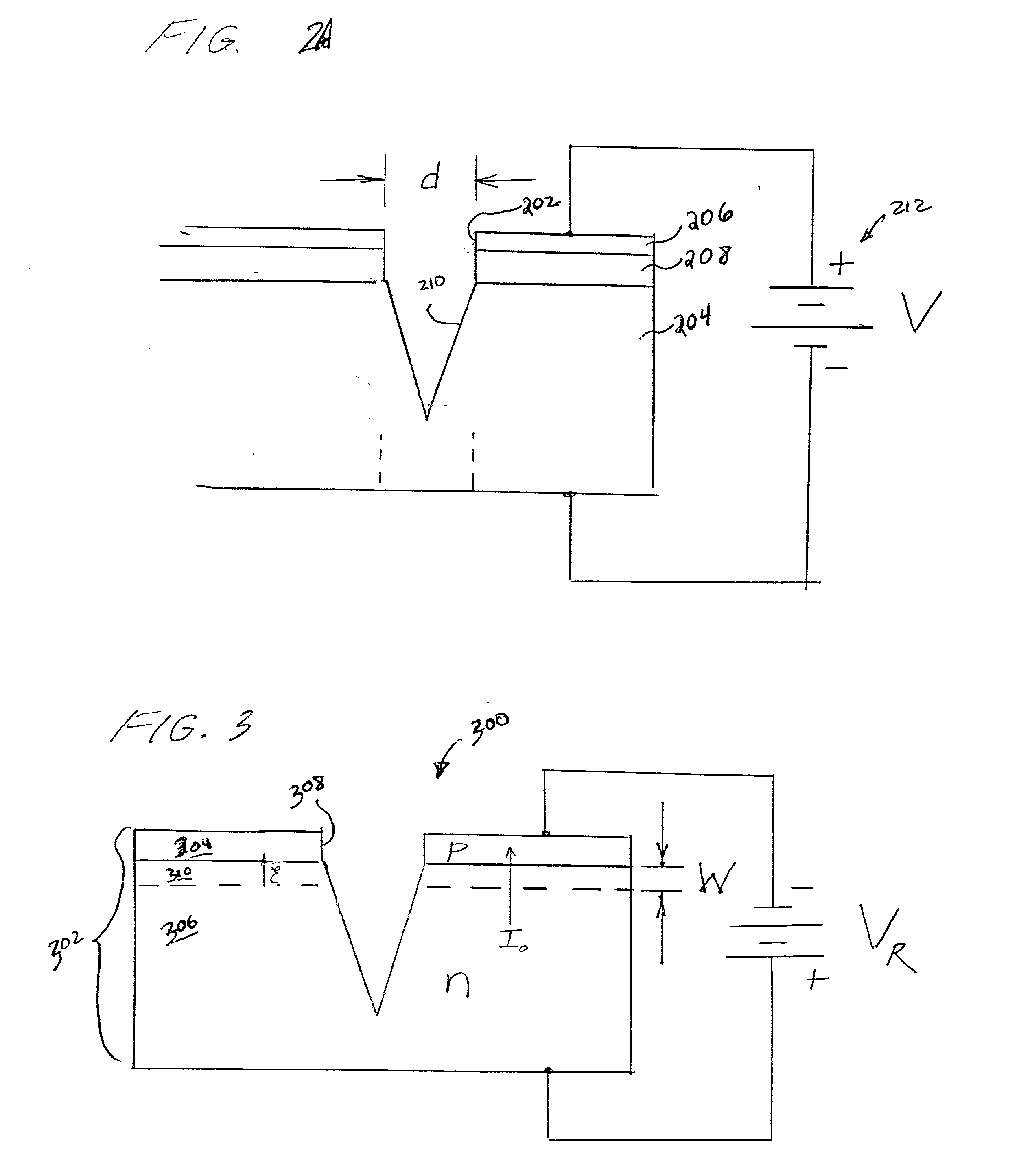Microdischarge devices and arrays having tapered microcavities
- Summary
- Abstract
- Description
- Claims
- Application Information
AI Technical Summary
Benefits of technology
Problems solved by technology
Method used
Image
Examples
Embodiment Construction
[0070] Devices were fabricated in p-type silicon (100) wafers having a resistivity of 6-8 .OMEGA.-cm and a typical thickness of 300 .mu.m. Pyramidal cavities, 50 or 100 .mu.m square at the base and of 35 .mu.m or 70 .mu.m depth, respectively, were fabricated. The cavities were produced by anisotropic wet etching in a 33% (wt / wt) solution of KOH in water. Subsequently, the device dielectric was formed by spin coating an approximately 7.5-8 .mu.m thick layer of a dry etchable polyimide (Dupont 2611, relative permittivity .epsilon..sub.r=2.9) onto the silicon surface followed by curing the polymer at 300.degree. C. in a N.sub.2 atmosphere. Subsequently, a 1200-2400 .ANG. thick Ni film was e-beam evaporated onto the polyimide to serve as the anode. The discharge channels in the metal anode and dielectric films were defined photolithographically with a Cr mask and etched by wet and reactive ion etched (O.sub.2 plasma) processes, respectively. Some devices additionally had SiO.sub.2 or Si...
PUM
 Login to View More
Login to View More Abstract
Description
Claims
Application Information
 Login to View More
Login to View More - R&D
- Intellectual Property
- Life Sciences
- Materials
- Tech Scout
- Unparalleled Data Quality
- Higher Quality Content
- 60% Fewer Hallucinations
Browse by: Latest US Patents, China's latest patents, Technical Efficacy Thesaurus, Application Domain, Technology Topic, Popular Technical Reports.
© 2025 PatSnap. All rights reserved.Legal|Privacy policy|Modern Slavery Act Transparency Statement|Sitemap|About US| Contact US: help@patsnap.com



